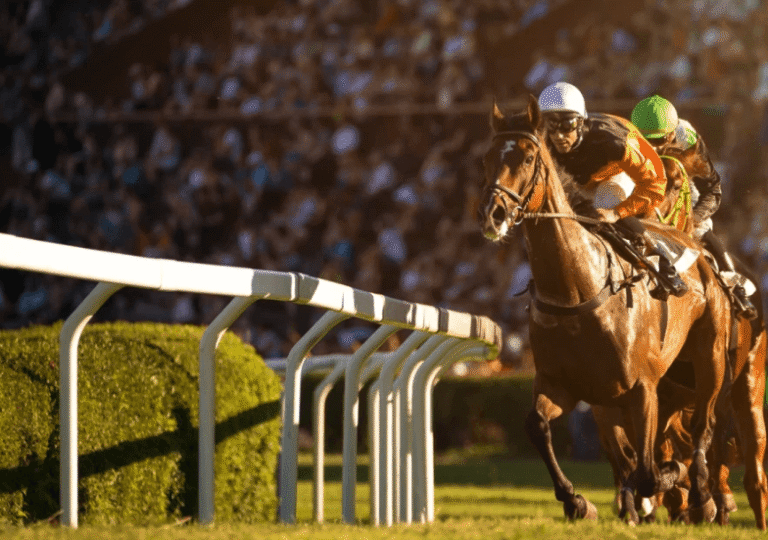For anyone interested in horse racing, understanding a horse racing program is essential. Programs provide detailed information about the horses, jockeys, trainers, past performances, and betting odds. Whether you are a casual fan, bettor, or aspiring horse owner, knowing how to read a racing program allows you to make informed decisions and appreciate the nuances of the sport.
This guide breaks down the key elements of a horse racing program and explains how to interpret them.
1. The Basics: What Is a Racing Program?
A racing program is essentially a guidebook for a race day. It includes:
- Race schedules and distances
- Horse names, ages, and weights
- Jockeys and trainers
- Past performances and race records
- Betting odds and tips
Programs can be printed or digital, and each provides the information needed to follow the races and place informed bets.
See also: The Importance of Nutrition for Racehorses
2. Understanding the Race Card
The race card is the heart of the program and lists all the horses running in a particular race:
- Post Position: The number assigned to each horse, determining their starting gate.
- Horse Name: Sometimes accompanied by lineage (sire and dam) or past titles.
- Age and Sex: Horses are categorized by age (2-year-olds, 3-year-olds) and sex (colt, filly, mare, gelding).
- Weight: Includes the horse’s assigned racing weight and any allowances.
This section provides a snapshot of each competitor’s identity and racing parameters.
3. Past Performances and Form
One of the most important sections is the horse’s racing form, showing historical performance:
- Finishing Positions: How the horse finished in previous races.
- Distance and Track Conditions: Information about how the horse performed on different surfaces and distances.
- Speed Figures: Numerical ratings of how fast the horse ran, often adjusted for track and competition.
- Trainer/Jockey Combinations: Historical success when paired with certain jockeys or trainers.
Analyzing past performances helps predict likely outcomes and identify horses that excel under specific conditions.
4. Odds and Betting Information
Programs include odds for each horse, reflecting their likelihood of winning as perceived by the betting public:
- Morning Line Odds: Set by the track handicapper before betting begins.
- Final Odds: Reflect actual betting trends once wagers are placed.
- Interpretation: Lower odds indicate favorites, higher odds indicate underdogs.
Understanding odds is crucial for placing strategic bets and managing risk.
5. Track and Race Details
Additional program information includes details about the track and race conditions:
- Track Type: Dirt, turf, or synthetic surfaces.
- Distance: Measured in furlongs or miles, critical for assessing horse suitability.
- Race Type: Maiden, allowance, stakes, or handicap races indicate the level of competition.
- Purse: Total prize money, often reflecting the race’s prestige.
These details provide context for evaluating performance and strategy.
6. Key Symbols and Abbreviations
Horse racing programs are filled with abbreviations and symbols:
- S = Sprint, M = Mile, G1/G2/G3 = Grade of stakes race
- F = Filly, C = Colt, M = Mare
- Track condition abbreviations: FM = Fast, GD = Good, SL = Slow
- Special notes may include scratches (horses withdrawn) or medication status.
Learning these symbols allows for quick comprehension during races.
7. Tips for Using a Program Effectively
- Compare Horses: Look at past performances, speed figures, and jockey-trainer combinations.
- Consider Conditions: Evaluate how horses perform on specific surfaces or distances.
- Follow Trends: Observe patterns such as winning streaks or improvement over time.
- Budget Wisely: Use odds and past data to make informed wagering decisions.
A program is a powerful tool for strategy and enjoyment when used effectively.
Conclusion
Reading a horse racing program may seem complex at first, but with practice, it becomes an essential skill for any racing fan or bettor. By understanding race cards, past performances, odds, and track conditions, you can make informed decisions, appreciate the sport more deeply, and enhance your overall experience.
Mastering the program allows fans to analyze races like professionals, turning a day at the track into both an exciting and educated experience.
